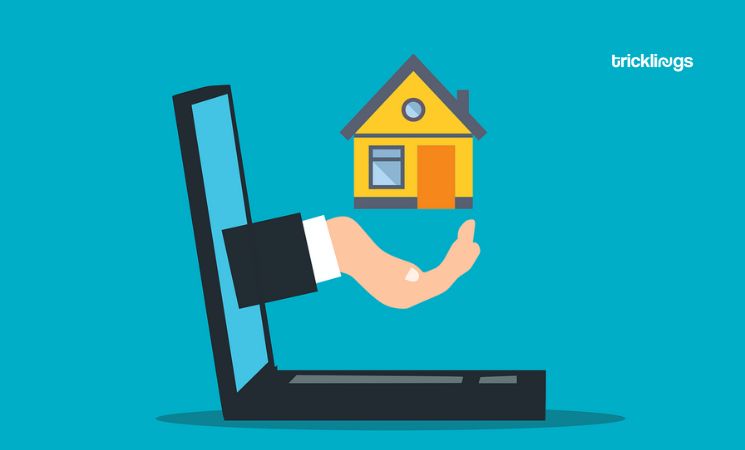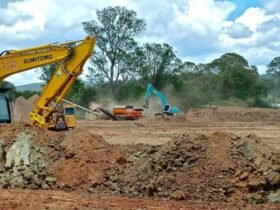There’s an invisible pulse that guides real estate markets, quietly shaping neighborhoods and cities, dictating who moves in, who stays, and who gets priced out. This pulse is rental demand, a force that reflects deeper societal trends, economic shifts, and cultural transformations.
Yet, how does one truly gauge the demand for rentals in an area? Behind the dry data points of vacancy rates and rental prices lies a larger story about people, places, and the complex intersections between them.
At first glance, determining rental demand might seem as simple as scrolling through listings on Zillow or checking vacancy rates on Realtor.com. But these metrics are just surface ripples on a deeper current. High vacancy rates, for instance, could indicate low demand, while fast-moving listings often point to competitive markets.
This is the first clue, the digital footprints of a thriving or faltering rental market. However, a true understanding requires much more than numbers on a screen.
To truly grasp the pulse of rental demand, one must consider the societal forces at play. Population growth is one such force—cities and neighborhoods with a booming population, especially among young professionals or students, often see higher demand for rental properties.
It’s no coincidence that areas around universities or booming tech hubs like Seattle and Austin have become epicenters of rental activity in recent years. The job market also plays a pivotal role: wherever employment opportunities bloom, rental demand follows.

The arrival of Amazon in Seattle, for example, transformed once-overlooked neighborhoods into hotspots for young renters eager to live close to work.
But this isn’t just a numbers game. There’s a human story behind the rising or falling rental demand in any area. Walk through a neighborhood with fresh developments, sparkling new cafes, and people strolling with their morning coffee, and you can feel a buzz, an energy that data alone cannot capture. Real estate agents, property managers, and even local shop owners are often the gatekeepers of this knowledge.
They witness the day-to-day shifts, the families moving in, and the young professionals eagerly snapping up newly built apartments. These observations are invaluable in understanding whether rental demand is on the rise or fall.
The connection between infrastructure and rental demand also cannot be overstated. New development projects, whether it’s a new shopping center, park, or public transport line, tend to draw people—and renters—into previously overlooked areas.

Consider Brooklyn’s Williamsburg, where the expansion of the L Train link to Manhattan suddenly made this once-industrial neighborhood a prime rental market for artists and young professionals alike. This transformation was not just about transit but about accessibility, the promise of something more.
The concept of rental demand is nothing new. History offers parallels that show how economic, cultural, and infrastructural changes have always shaped where people live. In post-World War II America, cities like Los Angeles and Chicago saw a surge in rental demand as returning soldiers sought homes near burgeoning industries.
Today, similar forces are at play—though the soldiers may have been replaced by tech workers, startup founders, and digital nomads. The underlying forces remain the same: wherever there is opportunity, there is demand for a place to call home.
However, there is also a darker undercurrent to this story. Gentrification, often linked to rising rental demand, has displaced long-time residents in favor of wealthier newcomers, changing the fabric of neighborhoods.
As areas become more desirable, they become less affordable, and the very essence that made them appealing in the first place—diversity, culture, community—can be eroded. The rise in rental demand often walks hand-in-hand with rising inequality, a sobering reality that must be part of the larger conversation.
In the end, finding out rental demand in an area is as much about feeling the heartbeat of a place as it is about crunching the numbers. It’s about listening to the stories of those who live there, understanding the reasons behind growth or decline, and recognizing the cultural forces at play.
The demand for rentals is not just about finding shelter—it’s about finding a place in a world that’s constantly shifting. It’s about opportunity, survival, and sometimes, it’s about holding onto a dream. And in that search for demand, we catch a glimpse of what it means to be part of a community, to belong.
Top 3 Questions to Ask When Buying a Rental Property
1. What is the Rental Demand in the Area?
- Understanding the local rental market is key. Are there more potential renters than available properties? This will influence how quickly you can find tenants and what rental rates you can set. Look at vacancy rates, average time on the market, and the area’s population trends (e.g., job growth, student population, etc.).
Why it matters: High demand means you’re more likely to have consistent rental income and less time with vacancies.
2. What Are the Expected Costs Beyond the Mortgage?
- It’s easy to focus on the mortgage, but there are other costs associated with owning a rental property. These include property management fees, maintenance, repairs, insurance, taxes, and possible homeowner association (HOA) fees. Understanding these will help you calculate whether the rental income will cover your expenses and leave you with a profit.
Why it matters: If costs are higher than expected, your investment might not be as profitable as anticipated.
3. What Is the Property’s Cash Flow Potential?
- Cash flow is the amount of money left over after all expenses are paid. It’s important to estimate this by considering the rental income, maintenance costs, property taxes, and any other expenses related to the property. Positive cash flow means you’re making money each month, while negative cash flow means you’re losing money.
Why it matters: Positive cash flow ensures long-term profitability and financial stability.
Conclusion
Rental demand is the intersection of economic opportunity, social mobility, and human aspiration. While tools like online rental platforms and market reports provide a starting point, truly understanding demand requires a closer look at the human stories driving these trends. From tech booms to urban renewal projects, the demand for rentals is more than just a number—it’s the pulse of a community in motion.











